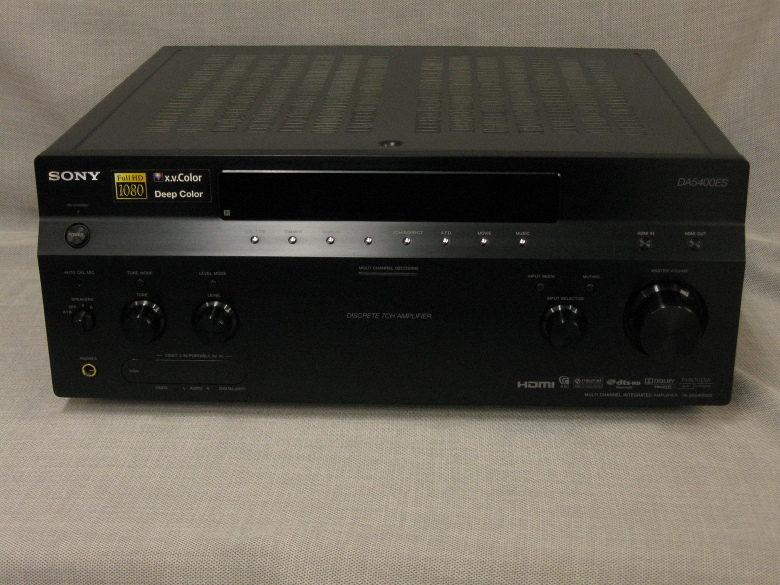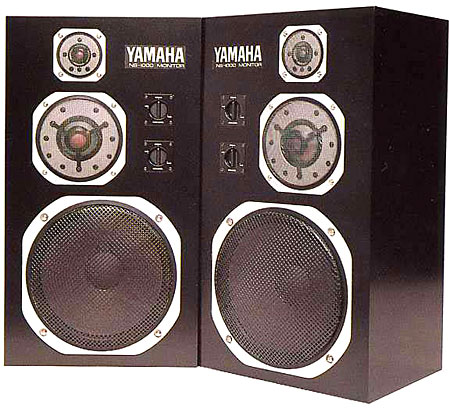Kreshna Aryaguna Nurzaman wrote:
Well what I meant is "tube sound". You know, the warm, second-order harmonics distorted sound. Wonder if such "warmth' is actually good for "sterile" FM music.
Honestly I'd say it depends heavily on the amplifier in question - a guitar amplifier, for example, will impart a lot of "flavor" to the sound (and that's by design in many cases). Whereas high performing McIntosh tube amplifiers attempt to be as clean as possible, and in my experience are more or less indistinguishable from good solid-state devices. 😐
retrofanatic wrote:
I know...it was one of those situations where the thrift store didn't know what they had and I just had I guess....I did get lucky...I am spending a bit more time checking out that same thrift store now. 🤣 you never know what else might show up there.
Had a similar shop near me for a while - they now charge for donations (not kidding), and the selection has gone to the birds; don't think I've been in there in almost a year. 😒
I love that AKAI tape deck....$10 is a great deal for that (as long as it is fully functional)...I have a couple tape decks as well and don't really use them much, but it is nice to have....I have actually been on a quest for a while now to have a stereo component for every type of popular media. The less popular components I own include a Betamax, MiniDisc, and 8 track player...pretty old school.
As far as I'm aware it works fine - it's played the one or two tapes I have to test it with. It isn't the quietest deck ever made - I don't know if that's just how it is, that my specific example has aged (I read somewhere that it was "new" in something like 1976), or that something isn't perfect about either the tapes I have (they probably aren't too new either) or something needs help on the deck. I have a ~decade newer Pioneer (that has a lot more noise reduction stuff) that's probably a little bit quieter sounding, but both seem to play fine (no weird distortion/etc) so I'm assuming the AKAI is just older and less fancy (I don't know what "average" was for 1970s tape decks; guessing probably not great though).
I used to be on such a quest to support video formats - stopped after getting into Laserdisc and HD-DVD. 😊
My current "setup" can do anything mainstream, plus HD-DVD, but is otherwise pretty slimmed down - I will admit that I got tired of having something like 25 machines all hooked up just to watch TV or something. 😲
Good eye spotting the SLV-700 series VCRs! My VCR's are actually the SLV-798HF and the SLV-798HF
I also have 2 X SLV-778HF's and 2 X 779HF's as well.
I have two SLV-775HFs - one is in much better condition than the other. The first one was bought brand new in whatever 1997. The second one is probably the holy grail of find stories:
I was looking for a VCR that'd give me stereo RCA out a few years ago - I didn't want the VCR component, I just wanted to integrate stereo speakers to a TV that didn't have an audio output jack. I figured for laughs I'd check for a 775HF on eBay. I found one at $0.99 no reserve and entered a max bid of around $10 - a week later the auction closed at $0.99. Oh yeah, and it guaranteed free shipping. I actually contacted the seller (it was some mom & pop electronics shop in Pennsylvania) and offered to cover all or part of the shipping - got a response "don't worry about it" and a few days later received a very well packaged and padded, fully functioning, Sony SLV-775HF. You read that right: for less than a dollar.
It has probably half of the Sony logo rubbed off (I don't really mind that), and it appears the internal battery reserves are pretty much gone - the one I've had since day one can survive hours without power, the one I grabbed used will reset itself if it doesn't have power for 10-15 minutes; enough for a quick blackout, but if the power is lost to the house for a while (I unplug it to move it) I probably have to reset it. Haven't bothered opening it up to see if the batteries can be replaced or not - currently it's being stored in a closet and the "good" (they both work 100% for their intended purpose) one is hooked up; I got sick of having two VCRs and two rooms with (different) stacks of tapes spread out - so everything got moved into one location with one VCR (which took some doing - I think in total there's a few hundred tapes). I figure if anything happens to the one in-use, I can pull spares off the one in the closet, or if I ever need another VCR (like for dubbing), it's also there. 😀
I am very impressed....Very good eye spotting the Sony VAIOS as well!!!! 🤣 My Sony VAIO systems are RB-40 cases (3 of them) are made by FoxConn actually and are a very high quality tower case. I have spent 5 years looking for three of them to fit nicely in my stereo unit, and finally have all 3. I was lucky to find all locally at a really good price (one was free)...they are reserved for my more modern systems (Windows 7, 2XWindows XP systems). I keep them close to my sony stereo since I use the optical output to connect to my digital receiver and they are also connected to my 40" sony TV's HDMI and VGA inputs and my LCD monitor. My retro rigs are all in beige desktop cases that I will eventually place close to my stereo system as well that should all connect to my receiver as well, but I have not figured out how to fit my CRT in my setup yet.
Very nice. Quick look for some more pictures of the RB-40 online and they do look like very good, and simple, enclosures. 😀 I remember a few years ago seeing a Sony VAIO in a store that had a "gap" between parts of the case - you could stick your hand through it. No idea what model it was...years later I have a Silverstone case that's fairly similar, guessing that finding the original Sony would probably have been cheaper though... 🤣
My SVHS sony deck is actually the SVT-S3100 which I picked up for $5 from a local scrap yard that used it as part of their surveillance system...it was in great shape actually and it's the only affordable SVHS I could find locally without spending $100 or more. I wish I had the R1000 you mentioned, which is of course a much better unit suited to a home stereo.
I don't know a whole ton about SVHS in general - I've played around with a Panasonic here and there, and actually had a chance to buy an R1000 for around $15 from a salvage dealer. Problem was - we turned it on, and it blew up like the robot in the first Star Wars movie. And I also didn't get R2-D2 as a consolation prize. 🤣
They're very nice units, but after a while I kind of lost of interest in tracking a working one down - I don't have anything on S-VHS, and found a DVD-RAM/DVD-RW recorder a few years ago in an electronics shop - they had probably half a dozen of them on consignment for $13.99 each; in retrospect I should've bought the others too. It's a Panasonic DMR-T3030. It behaves almost exactly like a VCR, except it takes DVDs and CDs instead.
🤣 yes, I actually love Sony...I tend to like to have matching components and Sony seems to be readily available in thrift shops around here. Also, they have kept a similar look throughout the 80's and 90's and even into the 2000's. I really like that they have stayed away from all the "fake chrome and rounded eges look" and stayed with a similar design profile for most of their black stereo components. A lot of the Sony components I have match up really nice even though they are all from different eras....for example, my sony tape deck from 1995 has the same design as my VCR's from 1989 and my digital receiver from 2003. It's just nice to know that if my VCR breaks down, I can just go to a local thrift store or pawn shop and buy one for $10 and it would match my other components.
Indeed - I think only Sony and McIntosh have maintained such a consistent look over the decades. McIntosh is kind of "hate it or love it" though - they will stand out no matter where you install them. Of all the various Sony equipment I've ever seen, I like the look of the receivers and CD players from a few years ago the best, where it has the angled face:

There's actually some computer cases from Silverstone that match that look pretty closely:
http://www.silverstonetek.com/product.php?pid=227&area=en
Although I've never pursued putting together such a system.
But you're right that across all eras it's pretty much consistent - my CDP-211 wouldn't look entirely of place with that receiver, or with your receiver, or with a brand new one, etc. Yamaha was doing pretty well up until a few years ago, and then gave-in to the gloss plastic and fake chrome look, backed up by tons of bright blue VFDs and LEDs... 😵
What always got me though - if you look at my pictures, the two gleaming silver metal headphones are the Sony offerings from the mid to late 1990s. They stand out like a sore thumb, but especially so if set beside Sony components... 😖 Why couldn't they just be BLACK? 😒
Besides, I find Sony stuff is a good balance between quality and value and I also have one SONY remote that controls everything (even one of my VAIOs I use as an HTPC).
You ever used one of their big-un Remote Commander units that look like they have a keyboard? I've always been curious how those work...
I also vaguely remember about a decade ago they tried "gesture control" on a few receivers - never saw anything about that again though.













